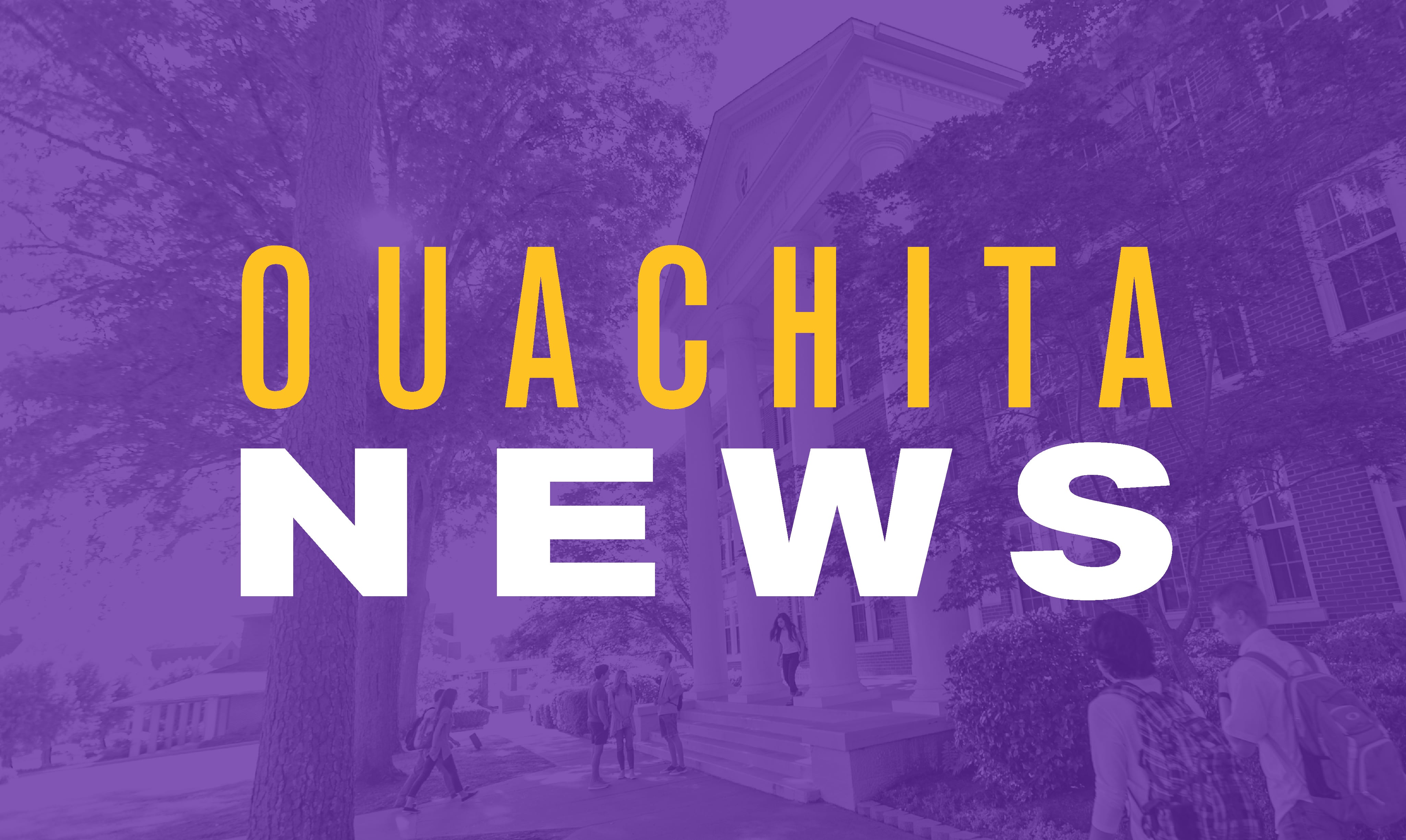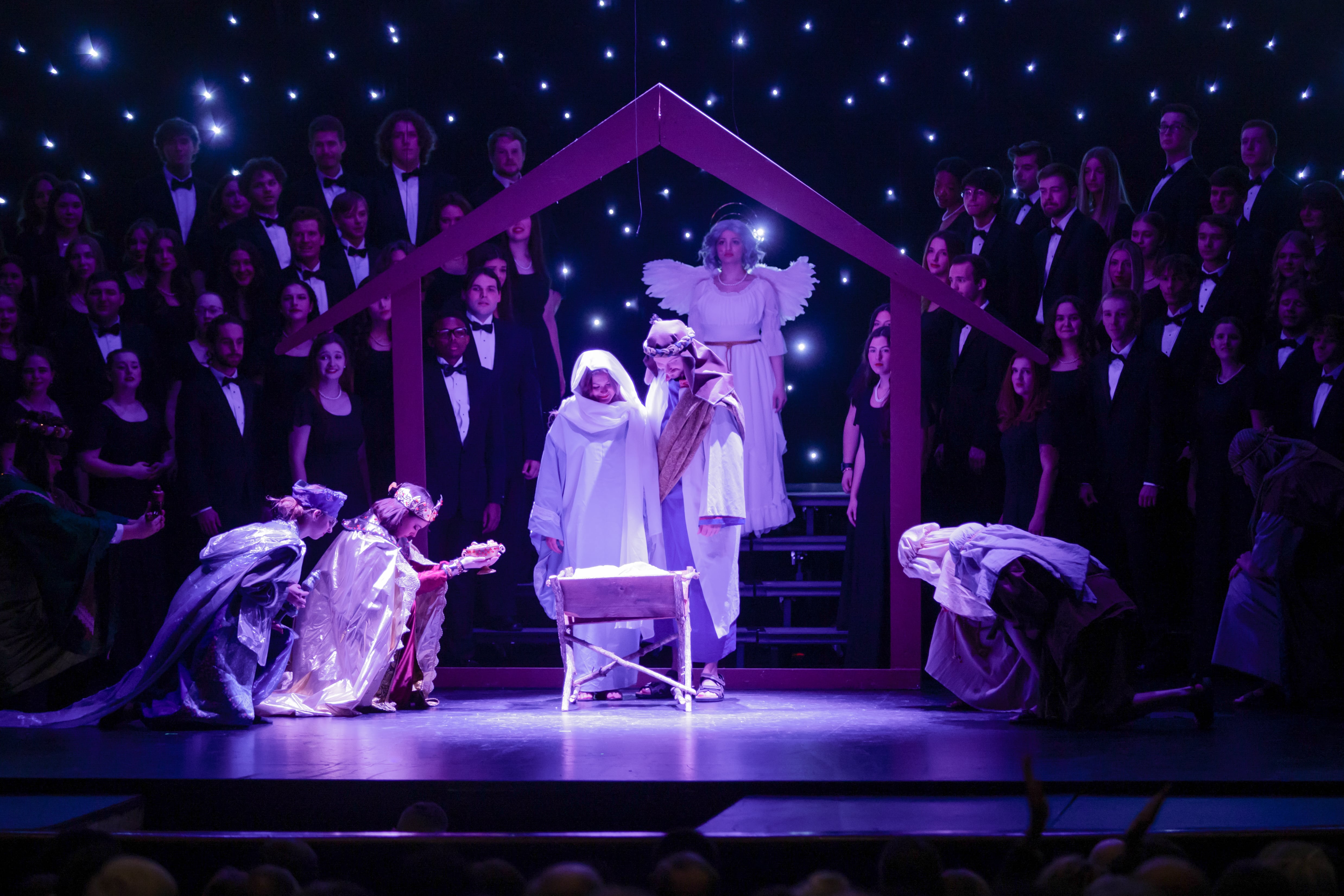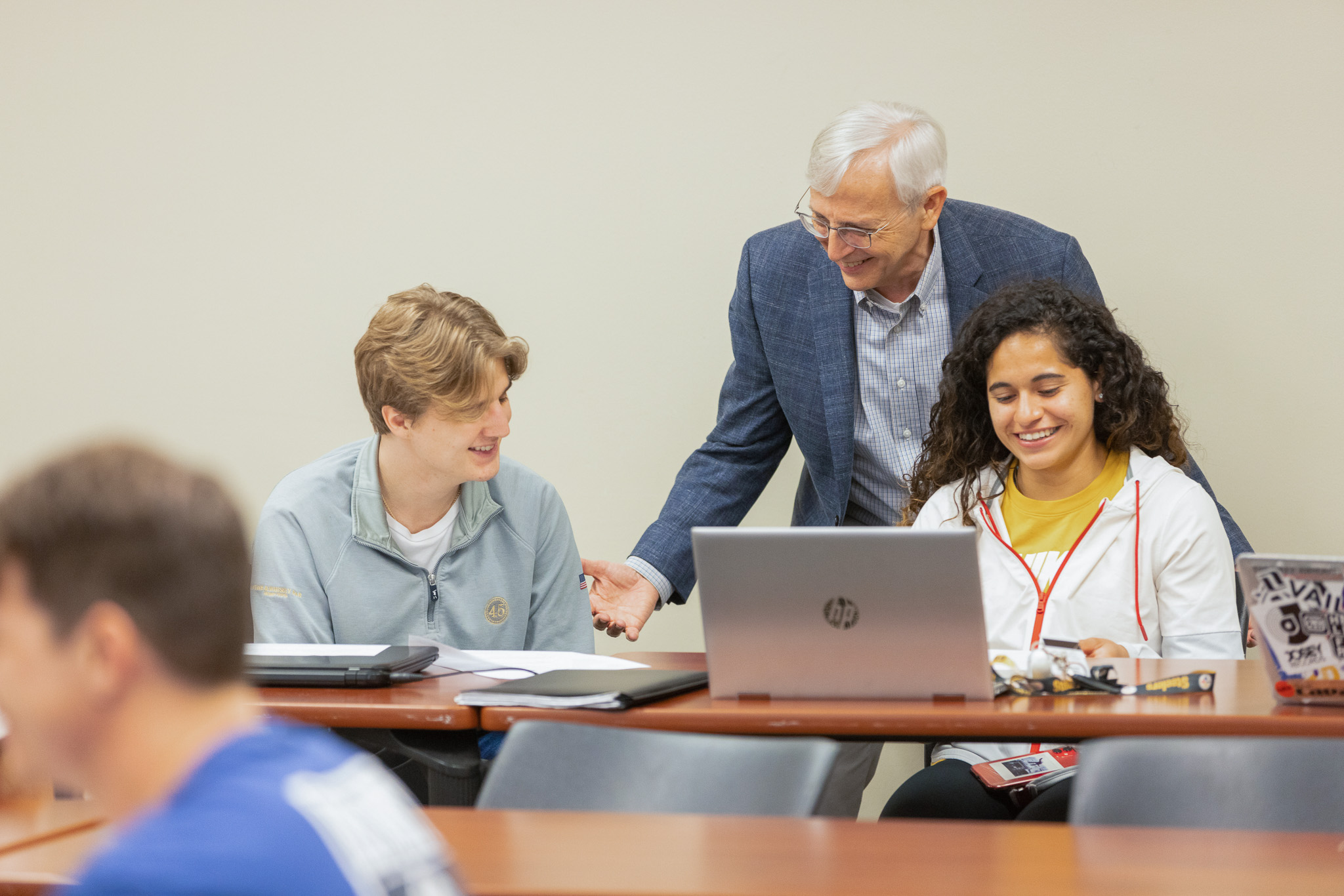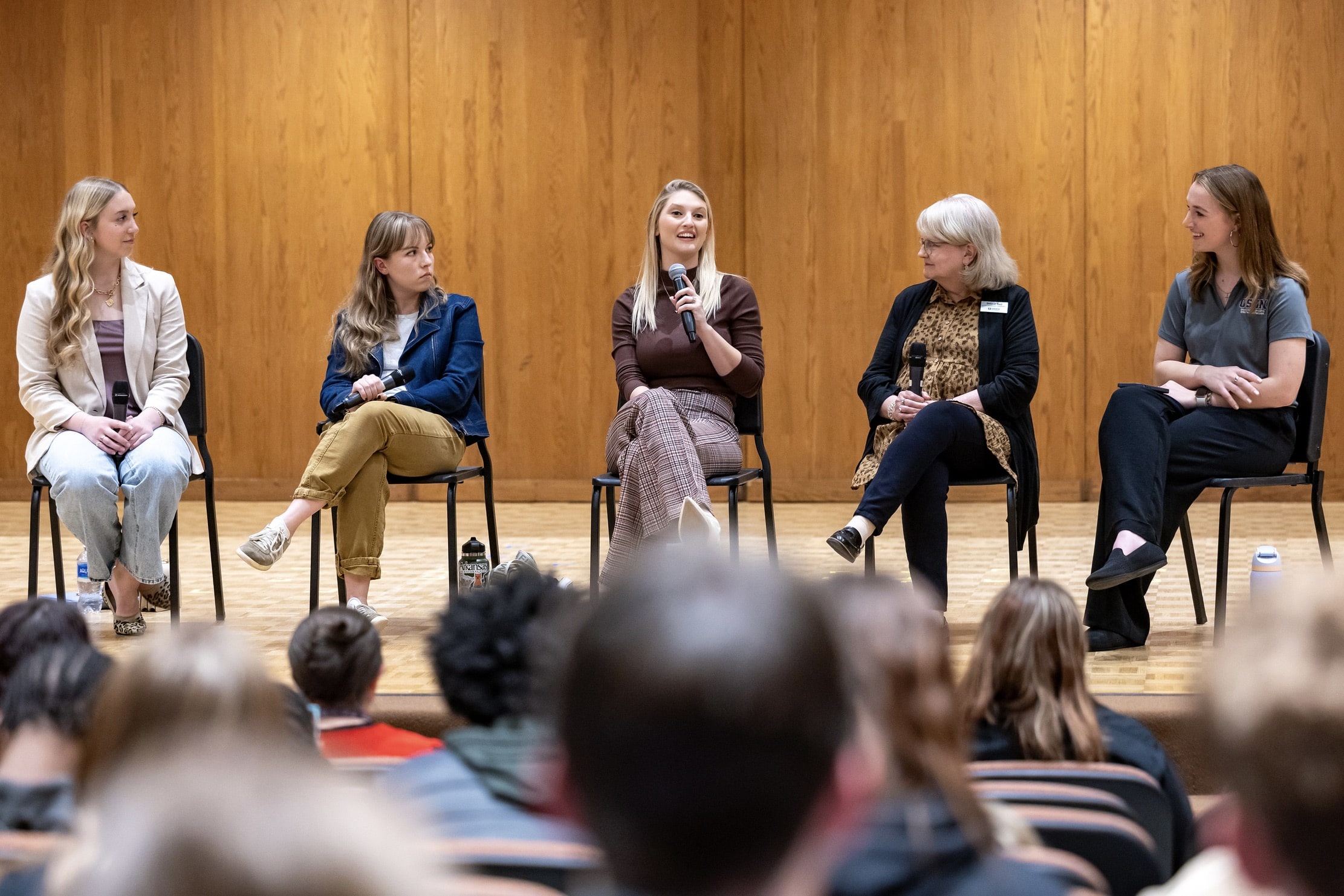Nagasaki Cross on display at Ouachita reflects call for cultural, spiritual peace
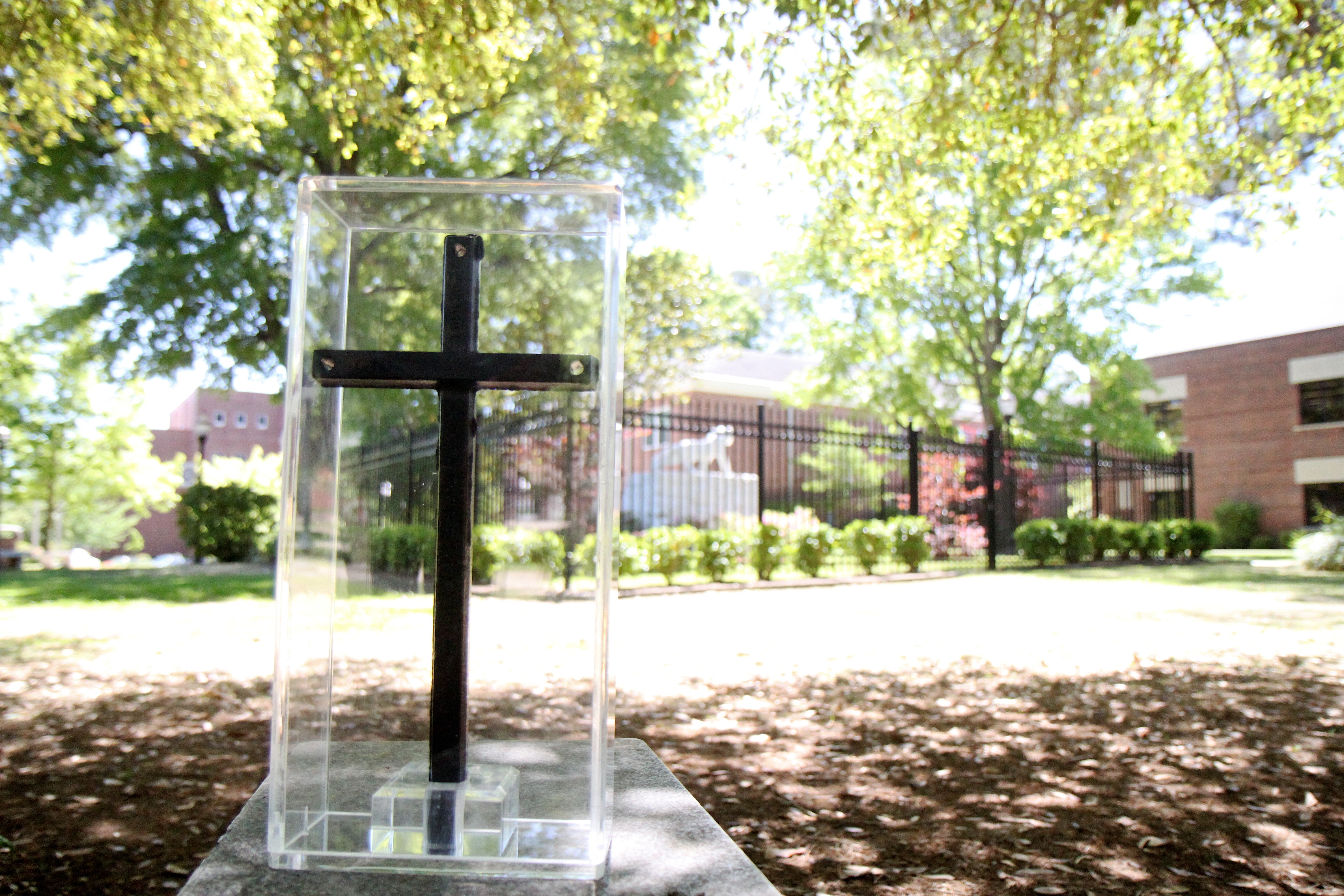 April 28, 2014
- Trennis Henderson
April 28, 2014
- Trennis HendersonStanding just over 14 inches high by 6.75 inches wide and weighing less than seven
pounds, the Nagasaki Cross does not strike an imposing presence. But its meaning does.
The cross sculpture recently was forged from materials salvaged from a school building
damaged by the U.S. atomic bomb dropped on Nagasaki in 1945 at the end of World War
II. The cross is engraved with tributes to both Nagasaki and Hiroshima, the site of
the first atomic bomb explosion three days earlier. It also stands as a memorial to
the devastating 8.9 magnitude earthquake and 23-foot tsunami that triggered widespread
death and destruction throughout the region in 2011, including a nuclear accident
at the Fukushima Daiichi Nuclear Power Plant.
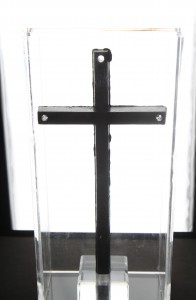 The Nagasaki Cross, which went on public display this week in Ouachita Baptist University’s
Riley-Hickingbotham Library, is a gift from Seinan Gukuin University in Fukuoka, Japan.
The cross was presented by Dr. Gary Barkley, president of Seinan Gakuin, to Dr. Michael
Arrington, executive director of the International Association of Baptist Colleges
& Universities and a former vice president for academic affairs at Ouachita. The IABCU
is a cooperative group that includes Ouachita and 46 other Baptist institutions from
16 states as well as Japan and Nigeria.
The Nagasaki Cross, which went on public display this week in Ouachita Baptist University’s
Riley-Hickingbotham Library, is a gift from Seinan Gukuin University in Fukuoka, Japan.
The cross was presented by Dr. Gary Barkley, president of Seinan Gakuin, to Dr. Michael
Arrington, executive director of the International Association of Baptist Colleges
& Universities and a former vice president for academic affairs at Ouachita. The IABCU
is a cooperative group that includes Ouachita and 46 other Baptist institutions from
16 states as well as Japan and Nigeria.
Ouachita and Seinan Gakuin have maintained an academic exchange program for nearly
four decades, with Ouachita’s first international exchange program established by
President Emeritus Daniel Grant during his tenure as president. Since 1975, more than
100 students each from Ouachita and Seinan Gakuin have participated in the exchange
program.
“Since Seinan Gakuin was founded by a Baptist missionary, the cross is a significant
reminder that even in the midst of war and devastation, Christ is still at work in
a world that sometimes seems overcome by war and violence,” Arrington said. “It is
a significant gift from our Japanese sister school, and it was appropriate that Ouachita
display the cross.” Plans call for the cross to rotate among Ouachita and other IABCU
schools with ties to Seinan Gakuin or Japan.
Ian Cosh, OBU vice president for community and international engagement and director
of the Grant Center for International Education, provided a brief overview of the
cross’ history during campus chapel services April 29. Noting that “Ouachita was selected
as the first university to display this work of art,” Cosh invited students to “take
the opportunity to look at the cross and learn more about these very significant events”
that it memorializes. The cross was put on display in the lobby of Jones Performing
Arts Center and then transferred to Riley-Hickingbotham Library.
Inagaki Youhinori, the Japanese artist who created the sculpture, currently teaches
at Nagasaki Junshin University. In his artist’s statement, he explains that during
the 2011 demolition of the Chensei school building in Nagasaki, he was invited to
create a peace memorial.
“While working on other projects, I had occasionally been touched by the thought of
those local inhabitants,” Youhinori reflected. “But it was at the height of the March
11 disasters, the earthquakes and the nuclear reactor explosions, that I decided it
was time for me as an artist to create the peace memorial; to leave for the next generation
a tool for succession and hope. And so I took from the demolition site some scraps
of reinforcing rod so they would not disappear in burial but be recreated anew in
the form of the Nagasaki Cross.”
Emphasizing that the cross’ materials “have been reborn into a new existence by passing
them once again through a cast iron furnace,” Youhinori added, “Undoubtedly, this
reminds us of nothing less than the cross which stood as an instrument of execution
on the hill of Golgotha, and our complete purification and cleansing from the curse
through Christ’s suffering.”
Citing the overwhelming pain and loss suffered at Hiroshima, Nagasaki and Fukushima,
Youhinori asked: “Can we not say that the cross which memorializes the suffering that
has enlightened us, at the same time allows us to think of this suffering as the words
of the cross, divine words that surpass the wisdom of this world and encourage us
to consider the way in which we should proceed?”
As Riley-Hickingbotham Library prepares to display the Nagasaki Cross, Dr. Ray Granade,
OBU’s director of library services and professor of history, reflected on the significance
of both the exchange program and the sculpture.
“Traveling to and in a different culture provides one with snapshots of ‘the other,’
of those who speak and live differently from one’s personal experience,” he said.
“Living in a different culture, even in the ‘bubble’ of an educational institution
in that culture, almost guarantees to change one’s outlook on life.”
Noting that “the exchange program responsible for bringing the Nagasaki Cross to OBU
is our oldest,” he added, “In that way, the cross represents countless changed lives
for both American and Japanese students. Those lives are changed culturally by their
educational experience.
“The cross also represents lives changed spiritually by a living encounter with the
wooden cross on which this steel one is patterned and with the One who hung and died
there,” Granade concluded. “Encounters with both crosses change one’s life and one’s
worldview.”
By Trennis Henderson, OBU Vice President for Communications
You Also Might Like
Recent
Over 400 students and educators attend high school sports media conference at Ouachita
December 03, 2025